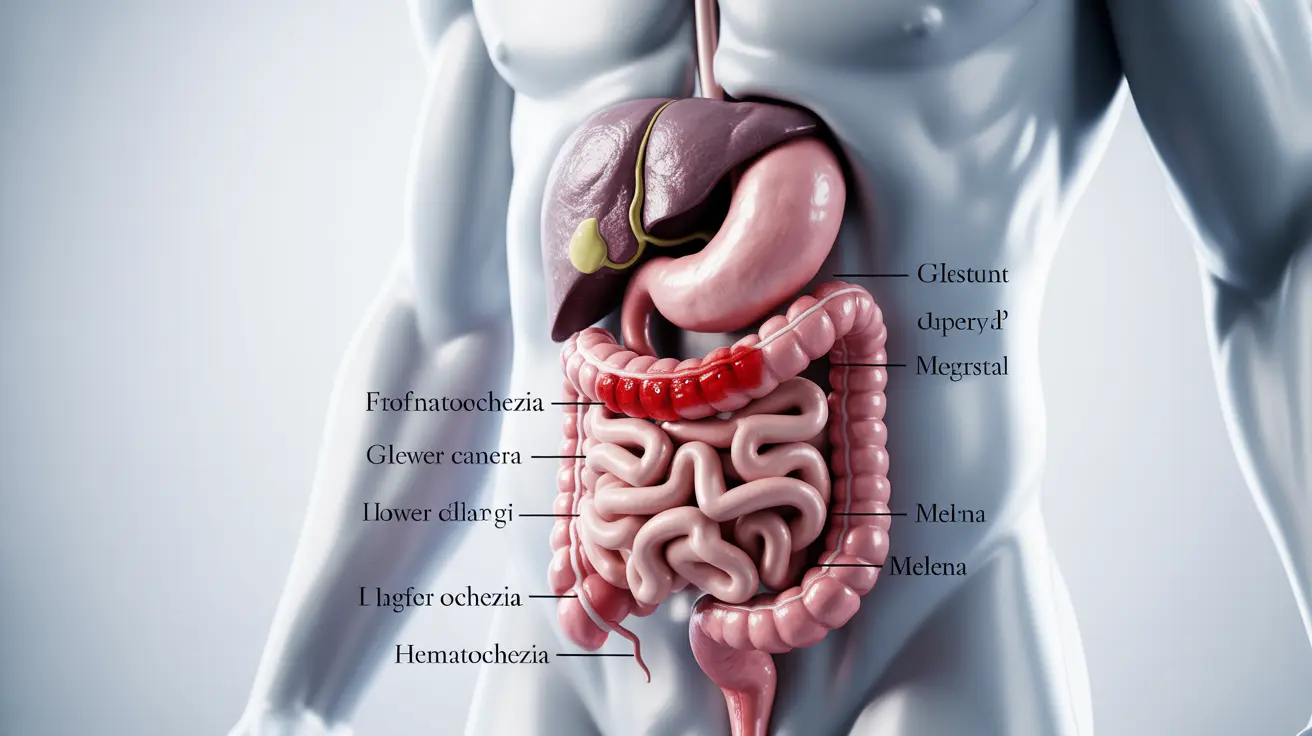Gastrointestinal bleeding can manifest in different ways, with hematochezia and melena being two distinct presentations that help doctors identify the source and severity of bleeding. Understanding these differences is crucial for proper diagnosis and treatment.
In this comprehensive guide, we'll explore the key distinctions between hematochezia and melena, their causes, diagnostic approaches, and when to seek immediate medical attention.
Understanding Hematochezia vs. Melena: Key Differences
Hematochezia appears as bright red blood in the stool, indicating fresh bleeding typically from the lower gastrointestinal tract. This bright red color occurs because the blood hasn't been digested by stomach acids. In contrast, melena presents as black, tarry stools, resulting from blood that has been chemically altered while passing through the digestive system.
The color and consistency of the blood provide crucial clues about the bleeding location. Hematochezia usually originates from the colon or rectum, while melena typically indicates upper gastrointestinal bleeding from the stomach or small intestine.
Common Causes and Risk Factors
Causes of Hematochezia
Lower gastrointestinal bleeding leading to hematochezia can result from several conditions:
- Hemorrhoids
- Anal fissures
- Diverticular disease
- Inflammatory bowel disease
- Colorectal polyps or cancer
- Severe intestinal infections
Causes of Melena
Upper gastrointestinal bleeding causing melena often stems from:
- Peptic ulcers
- Gastritis
- Esophageal varices
- Gastric cancer
- Medications (particularly NSAIDs)
- Portal hypertension
Diagnostic Approaches
Healthcare providers use various methods to determine the source and severity of bleeding:
Initial Assessment
- Physical examination
- Medical history review
- Vital signs monitoring
- Blood tests
- Stool analysis
Advanced Diagnostic Procedures
Depending on the suspected source, doctors may recommend:
- Colonoscopy
- Upper endoscopy
- Video capsule endoscopy
- CT scans
- Angiography
Warning Signs and Emergency Symptoms
Certain symptoms warrant immediate medical attention:
- Large volume blood loss
- Severe abdominal pain
- Dizziness or fainting
- Rapid heart rate
- Shortness of breath
- Confusion or disorientation
Treatment Approaches
Treatment strategies vary based on the underlying cause and severity:
Immediate Interventions
- Fluid resuscitation
- Blood transfusions
- Medication adjustments
- Endoscopic procedures
Long-term Management
Once the acute bleeding is controlled, focus shifts to:
- Treating underlying conditions
- Lifestyle modifications
- Medication management
- Regular monitoring
- Preventive measures
Frequently Asked Questions
What is the difference between hematochezia and melena in terms of stool appearance and bleeding location?
Hematochezia presents as bright red blood in the stool, typically originating from the lower gastrointestinal tract (colon or rectum). Melena appears as black, tarry stools, indicating bleeding from the upper gastrointestinal tract where blood has been altered by digestive processes.
What are the common causes of hematochezia compared to melena?
Hematochezia commonly results from hemorrhoids, anal fissures, diverticular disease, and inflammatory bowel disease. Melena typically stems from conditions affecting the upper GI tract, such as peptic ulcers, gastritis, and esophageal varices.
How do doctors diagnose whether bleeding is from the upper or lower gastrointestinal tract?
Doctors use a combination of physical examination, stool appearance, laboratory tests, and imaging studies. Endoscopic procedures like colonoscopy and upper endoscopy are often necessary to visualize and confirm the bleeding source.
What symptoms accompany hematochezia and melena that should prompt urgent medical attention?
Urgent symptoms include large volume blood loss, severe abdominal pain, dizziness, fainting, rapid heart rate, and confusion. These symptoms may indicate significant blood loss requiring immediate medical intervention.
How are hematochezia and melena treated based on their underlying causes?
Treatment approaches include immediate interventions like fluid resuscitation and blood transfusions for severe cases, followed by specific treatments for the underlying cause, such as endoscopic procedures, medication adjustments, or surgery when necessary.




